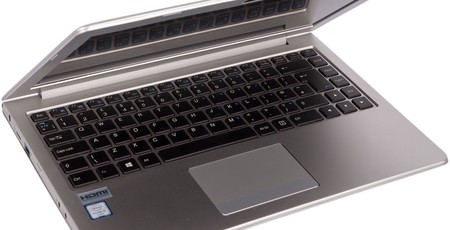
Performance Analysis
Our benchmarks are designed for laptops that usually have considerably more power than this one, and we only have a limited data set with the current suite. Nonetheless, they tell us enough of what we need to know.
We didn’t bother running our gaming tests – the drastic difference in 3DMark Fire Strike scores between this laptop and those running with a discrete GPU is enough to show what we already knew, namely that this is not a laptop to be used for anything but the most casual gaming workloads. Even a GTX 1050 Ti laptop is more than seven times as fast.

Intel’s Kaby Lake cores are fast, for sure, but the CPU here has only two of them and a tight power limit too, so it’s unsurprising to see it trumped by laptops with the four-core Core i7-7700HQ in benchmarks like HandBrake, Terragen, and Cinebench where the cores are hammered relentlessly. Like the games tests, however, these sorts of workloads are not really what the Lafité III is about. Photo editing is perhaps a more realistic requirement, although PCMark 8 suggests that if it’s your main gig, you’ll be better served by a more powerful CPU. We also have a PCMark 10 score, but this is only for your own comparative purposes until we have newer laptops to fill out the charts – this is the first time we’ve used it for a laptop review. The PCMark 8 Video Editing V2 workload provides a useful example of where cores aren’t everything – in lightly threaded loads, the CPU here keeps up well; after all, it can still Turbo Boost its cores to a respectable 3.1GHz.
The PCMark 8 Home suite of benchmarks is perhaps the most realistic usage scenario for this laptop, and it’s this that we use to assess battery life (we skipped the gaming battery life test for obvious reasons). The Lafité III put in a respectable performance here with a result of just under six hours – enough to occupy most of a work day or a good portion of a long-haul flight. The chassis design is interesting, as it could actually accommodate a much larger battery were it not for the maintenance of 2.5” drive support. That said, it then moves into more premium territory and is less flexible, as you restrict customers to costly M.2 flash drives only.
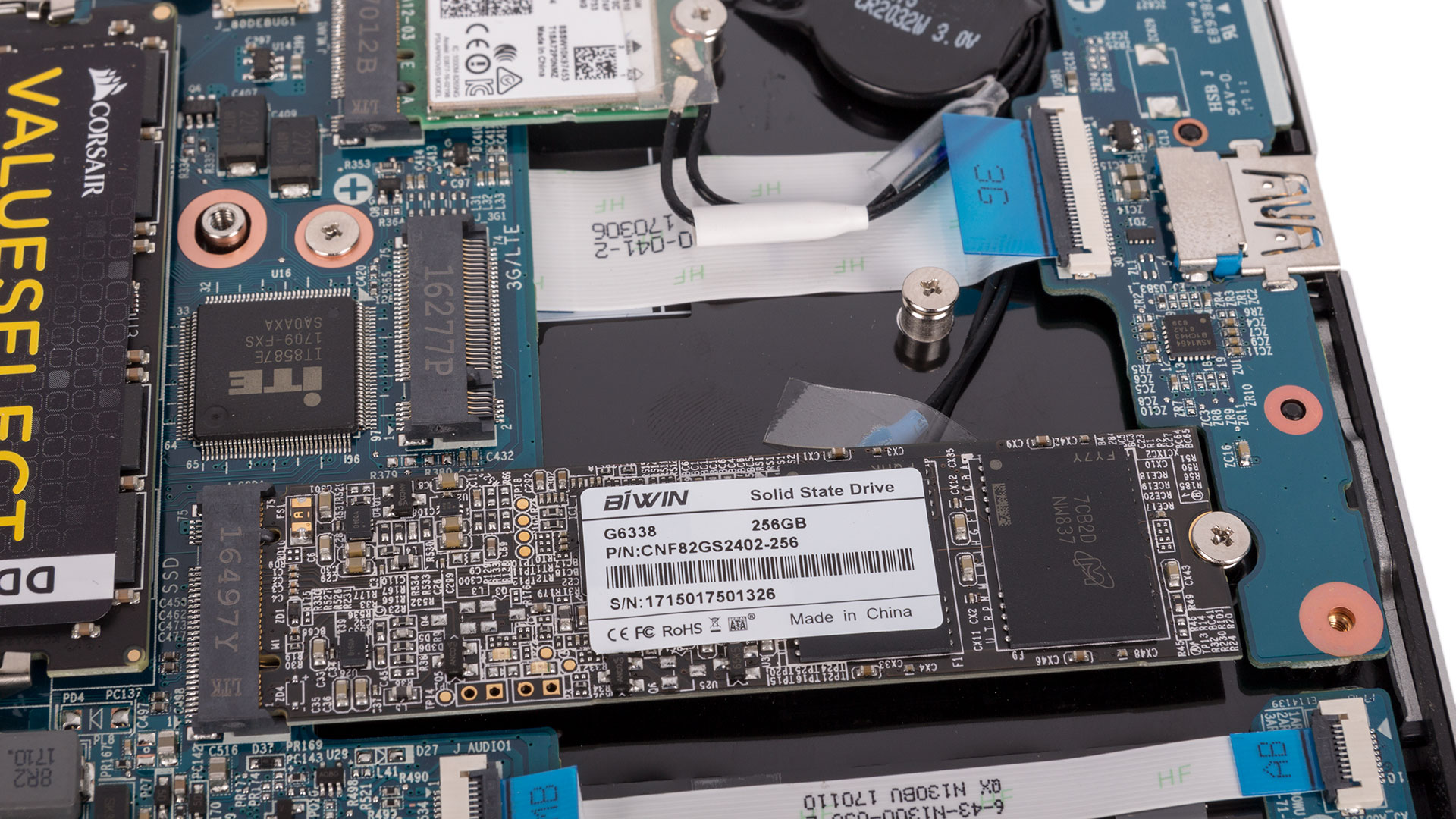
CrystalDiskMark reveals that the BiWin SSD is a little slower than your typical SATA drive, and this appears to have a knock-on impact to more demanding real-world usage scenarios. The SSD is easily enough to keep Windows and day-to-day tasks feeling responsive, though.
The 1080p IPS display proves its worth for the most part, offering near-full sRGB gamut coverage, a good contrast ratio, a massive brightness range, and excellent colour accuracy – an average delta E value of 1.18 is fantastic. The gamma curve could be improved to make mid-tones darker and add a little extra depth, and the white point tips towards the cool side of things, though 8,000 or so is still workable if not ideal.
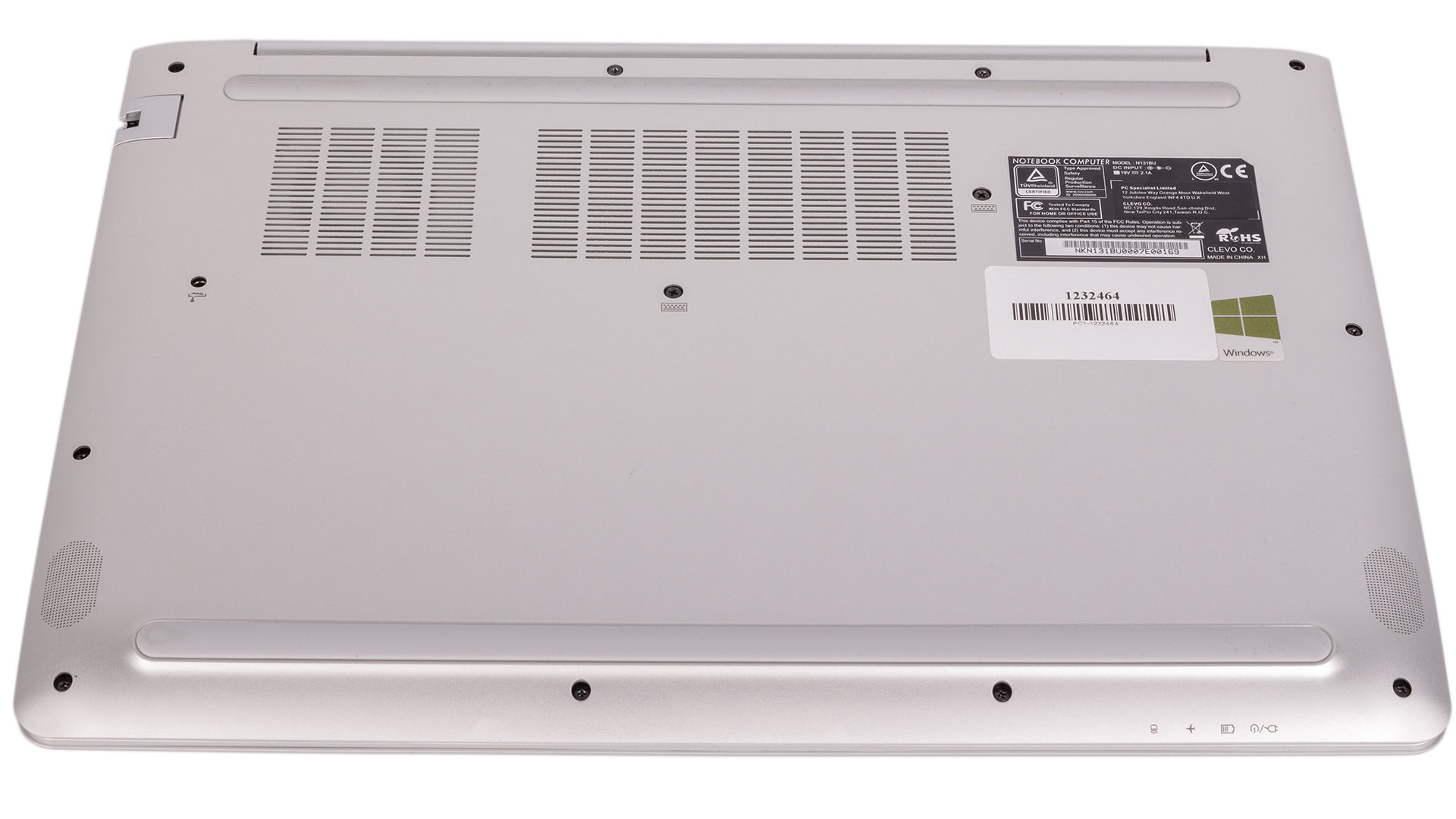
The laptop is virtually silent when idle. A thermal test using Prime95 did see the single fan reach its full speed (high pitched, but not actually too loud), but in doing so it was keeping the CPU at a cool 80°C on a warm day and allowing both cores to maintain the 3.1GHz boost speed. Sustained load like this isn't what this laptop is made for, but it still shows that the cooling system can handle it if necessary.
Conclusion
Overall, the Lafité III is a great little portable machine. With a two-core, four-thread Kaby Lake CPU, 16GB of DDR4, and a 256GB SSD backed up by 1TB of storage all wrapped in a 1.5kg, 18mm-thick chassis, we think it's a good deal for £800. The Core i5 CPU is a brilliant choice for an ultrabook, and you can upgrade it to the Core i7 version too – these are the same CPUs you'll see in the Dell XPS 13 and the Razer Blade Stealth (Core i7 only). You don't get the benefit of ultra-fast NVMe storage, but the SATA SSD is fine for everyday tasks, and the 2.5” drive means there's plenty of room to keep larger files.

Remember, if your budget is tighter, PC Specialist allows you to configure the laptop in the same chassis to even less (starting price £500 including a Windows 10 installation), in which case having a backlit keyboard, 1080p display, and no bloatware will put it ahead of much of the competition. That said, the review price here is specifically tailored to be a good deal for this machine, so consider that if you want to tweak the specs.
Ultimately, the Lafité III occupies a market position right between cheap and cheerful laptops and the most desirable ultrabooks out there. That's a lot of ground to cover, but we think it balances the majority of aspects well with its design and component choices, and it's a great choice for a portable, everyday work machine well under £1,000.


MSI MPG Velox 100R Chassis Review
October 14 2021 | 15:04

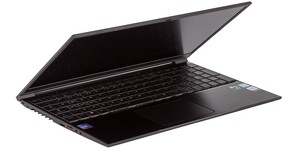
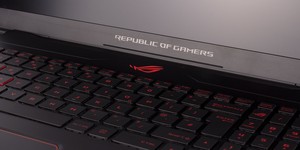





Want to comment? Please log in.